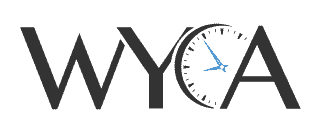If you’re looking to talk the talk you’re going to have to learn the lingo. The list below is probably nowhere near complete but it will give you a good run down of the most commonly used terms used in the horology world.
- Automatic – AKA, automatic movement. An automatic movement is a mechanical movement that uses a pendulum to wind itself. The pendulum spins when the watch is moved, winding a mainspring that powers the watch. Watches that utilize an automatic movement do not require batteries and are powered by the natural movement of the wearer’s arm. Automatic movements have a power reserve (how long the watch can run without further motion/charging) that can range from 20 hours to 60+ hours. Many automatic movements can be powered via winding the crown in addition to motion.
- Chronograph – A built-in stopwatch function. There are automatic, mechanical, and quartz movements that feature chronograph functionality.
- Complications – Refers to additional featured added to the basic timekeeping capabilities of a watch. A watch that has a display for the day of the week and the date of the month has a day/date complication, for example.
- Crown – Sometimes called a pin, head, or stem. The crown is a knob on the case of the watch that is used to set time, date, and manipulated various complications (if applicable, such as day/date, moonphase, etc.).
- Crystal – AKA, the face crystal. The watch crystal is also called the glass, and refers to the clear cover that protects the face of the watch. The crystal can be made of many different materials, with most high-end watches having sapphire crystals and less expensive watches having mineral crystals.
- Face – AKA, the watch face. Also called the dial. This refers to the actual display of the watch under the crystal.
- Jewels – A watch may say it has “17 jewels” (or more). This refers to jewel bearings, where a metal spindle turns in a jewel-lined pivot hole. Most jewel bearings are made of ruby or some other synthetic sapphire.
- Luminescence – A compound used in areas of the watch face (most commonly the hands and hour markers) that glows in the dark, enabling the wearer to tell time in low or no-light settings.
- Lugs – The points on the watch case that the strap connect to.
- Lug width – The width between the lugs. This measurement is typically needed when replacing the strap on a watch. IE – a lug width of 20mm means you need a 20mm strap.
- Mechanical – AKA, mechanical movement. A mechanical movement is hand-wound, requiring the user to manually wind the watch. Mechanical movements are often called manual movements.
- Power Reserve – This commonly refers to how long an automatic or mechanical movement will function without further winding.
- Quartz – AKA, quartz movement. A quartz movement utilizes an electronic oscillator, regulated by a quartz crystal, to keep time. Quartz movements are generally quite accurate, and compared to mechanical or automatic movements, only stop keeping time when the battery runs out or the crown is engaged by the user.
- Tachymeter – Usually found on chronograph watches, a tachymeter is used to measure the speed at which a wearer has traveled over a measured distance.
- Tourbillon – The escapement of the watch is mounted in a small revolving device that is designed to compensate for the effects of gravity on the accuracy of the movement. Most modern tourbillon watches are built as examples of watchmaking precision and are quite expensive.
- Water Resistance – Most modern watches are water resistant to varying degrees of severity. Some watches can handle being briefly submerged when washing hands, etc. while other watches can be word at depths in excess of 100 meters.
